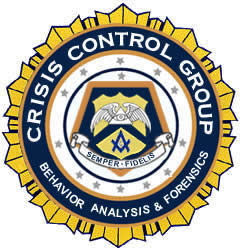 |
| Crisis Control Group. Credit: Tlcmgmt, Wikimedia Commons |
Picture it, a disaster, a tragedy, or a serious faux-pas and your organisation is at the centre of it. You frantically dust-off your crisis comms plan and follow the outlined steps. You edit one of your template statements, rush to seek sign-off and then circulate it and publish it to your website.
How long does that take, 30 minutes, an hour, two hours, longer...?
The first place that news of the tragedy broke was on Twitter, if you’re lucky you found out about it five minutes after it happened. While you’re producing the statement and seeking sign-off, the story of the crisis is already developing on Twitter.
The first tweet went out within a minute of the incident, pictures, short videos and a hashtag start appearing after two or three minutes. Concerned people are using your Facebook page and Twitter account to ask questions and seek information.
Five minutes after the incident occurred, a journalist with a large following has picked up on one of the tweets and re-tweeted it. This is seen by a large number of people, including other high-profile journalists and politicians.
News of the tragedy has gone viral on Twitter, your Twitter account and Facebook page are being inundated with questions, what are you doing?
Some simple things you should be doing:
Internal comms
- It’s likely that your PR & Comms Manager will manage the crisis comms plan implementation. If your Social Media Editor/Manager/Ninja isn’t based within the PR & Comms team, ensure that s/he is in constant contact with your PR & Comms Manager
Monitor conversations
- Monitor related Twitter activity by using applications like TweetDeck or Hootsuite – Set up searches for the name of your organisation (If you don’t already have one running), the hashtag people are using, and variations of terms that people are likely to use when Tweeting about the tragedy
- Get on your Facebook page, find out what people are saying.
- If you have a presence on any other social media platforms, monitor them as well.
- If people are providing links in messages about the tragedy, click on them and find out what they link to.
- Google relevant terms – Google indexes new news stories and blog posts very quickly indeed, find out what people are saying
Say something (but not anything)
- Do not go radio silent, the conversation is already happening, and false rumours are beginning to take hold. Talk to the person managing the Crisis Comms Plan and form appropriate responses – do this quickly, and regularly. Where possible, and appropriate:
- Give out confirmed information
- Post appropriate updates on the situation
- Give out a helpline phone number
- If you have scheduled Tweets or Facebook updates about great new deals and upcoming promotions, delete them (They will be very, very poorly received in the middle of a crisis)
A solid crisis comms plan is important for dealing with any unexpected major incidents, but never forget that you are communicating with real people, trying to manage an incident where people may have been hurt or upset, trying to deal with messages from people that have real concerns, and an incident that many people may have a passionate and critical response to – Don’t forget to be human.
Does social media feature in your organisation’s crisis comms plan, and does it look anything like the points outlined above?
No comments:
Post a Comment